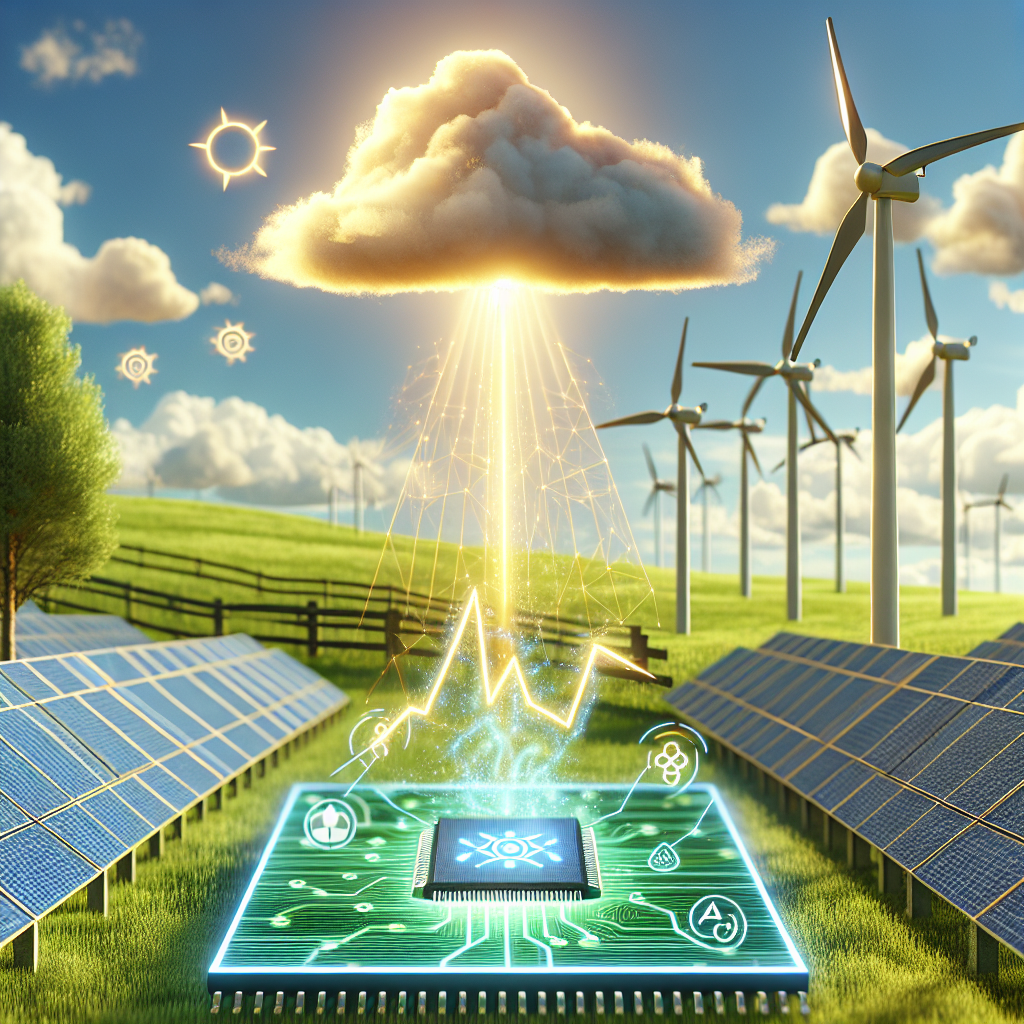AI-Powered Energy Forecasting for Solar and Wind Farms
In recent years, the renewable energy sector has seen significant growth, with solar and wind farms becoming increasingly common sources of electricity generation. However, the intermittent nature of these energy sources can pose challenges for grid operators and energy companies looking to balance supply and demand. This is where AI-powered energy forecasting comes in, providing a solution to accurately predict the output of solar and wind farms.
AI-powered energy forecasting uses advanced machine learning algorithms to analyze historical data, weather patterns, and other relevant factors to predict the future output of solar and wind farms. By accurately forecasting energy production, grid operators and energy companies can better plan for fluctuations in supply and demand, optimize energy trading, and improve the overall efficiency of the grid.
One of the key benefits of AI-powered energy forecasting is its ability to provide real-time updates and predictions. Traditional forecasting methods often rely on historical data and simplistic models, which may not capture the complex and dynamic nature of renewable energy sources. AI-powered forecasting, on the other hand, can continuously analyze new data and adjust its predictions accordingly, providing more accurate and reliable forecasts.
Another advantage of AI-powered energy forecasting is its ability to handle large volumes of data and complex relationships. Solar and wind farms generate vast amounts of data, including information on weather conditions, plant performance, and energy output. AI algorithms can quickly process and analyze this data to identify patterns and trends that may not be obvious to human analysts, leading to more accurate and reliable forecasts.
Furthermore, AI-powered energy forecasting can also improve the operational efficiency of solar and wind farms. By providing accurate predictions of energy output, operators can better plan maintenance schedules, optimize energy storage, and make informed decisions about energy trading. This can help reduce operational costs, increase the overall efficiency of the farm, and maximize the return on investment.
Overall, AI-powered energy forecasting offers a powerful tool for optimizing the performance of solar and wind farms, improving grid stability, and accelerating the transition to a renewable energy future. As the technology continues to evolve and improve, we can expect to see even greater benefits in terms of cost savings, energy efficiency, and environmental sustainability.
FAQs
Q: How does AI-powered energy forecasting work?
A: AI-powered energy forecasting uses advanced machine learning algorithms to analyze historical data, weather patterns, and other relevant factors to predict the future output of solar and wind farms. By continuously analyzing new data and adjusting its predictions, AI-powered forecasting can provide more accurate and reliable forecasts than traditional methods.
Q: What are the benefits of AI-powered energy forecasting for solar and wind farms?
A: AI-powered energy forecasting can help grid operators and energy companies better plan for fluctuations in supply and demand, optimize energy trading, and improve the overall efficiency of the grid. It can also improve the operational efficiency of solar and wind farms by providing accurate predictions of energy output, enabling operators to better plan maintenance schedules, optimize energy storage, and make informed decisions about energy trading.
Q: How accurate are AI-powered energy forecasts?
A: AI-powered energy forecasts are typically more accurate than traditional forecasting methods, as they can handle large volumes of data and complex relationships. By continuously analyzing new data and adjusting their predictions, AI algorithms can provide real-time updates and more reliable forecasts.
Q: Can AI-powered energy forecasting help reduce operational costs?
A: Yes, AI-powered energy forecasting can help reduce operational costs by optimizing the performance of solar and wind farms. By providing accurate predictions of energy output, operators can better plan maintenance schedules, optimize energy storage, and make informed decisions about energy trading, leading to cost savings and increased efficiency.
Q: How can companies implement AI-powered energy forecasting for their solar and wind farms?
A: Companies can implement AI-powered energy forecasting by partnering with technology providers that specialize in energy forecasting solutions. These providers can help companies collect and analyze relevant data, develop customized forecasting models, and integrate them into their existing systems to optimize the performance of their solar and wind farms.

